- Discover Aia
- The best of Gizpuzkoa
- The large cities
Further information:
EVENTS
April:
Txakoli day.
Collection Plant Fair.
May:
Agricultural and artisan product fair.
Ascent to Aia Rally.
June:
Pagoeta Day and the Gangs.
August:
Saint Donato and Saint Lorenzo Festivals: sport competitions, Bertsolaris, open-air dancing, rural sport, etc.
November:
Behobia-San Sebastian Race.
Year-round:
Rural Basque sport challenges and betting: dragging stones with oxen, harri-jasotzail, wood-chopping, etc.
Natural Pagoeta Park (Aia)
Several different prehistoric vestiges tell us about the first inhabitants of these lands, such as the Altxerri cave or the Arreta, Olarteta or Saberriko Haitzak burial mounds. Aia has an interesting cultural heritage: churches, hermitages, shrines, tower houses, farmhouses, foundries, windmills, lime kilns, snowfields… This all shows us a time past, other ways of life and other ways of understanding nature. The Pagoeta Natural Park shows the balance between nature and mankind. It covers a 2,860 hectare surface area, largely belonging to the municipality of Aia. Its name comes from Mount Pagoeta, 678 m high, which forms part of the Guipúzcoa coastal mountain range.
[rev_slider sliderPagoeta]
5 min, further information: www.aiapagoeta.com y www.costavasca.org
Iturraran Park and its botanical garden (Aia)
Iturraran houses a permanent exhibition on Pagoeta’s ethnographic and physical environment. Furthermore, it also offers an educational workshop and several interactive displays. Thanks to the aforementioned, visitors will become aware of the balance between nature and human activity.
The Botanical Garden of Iturraran is next to the Iturraran park. It covers a 25 hectare surface area. 10 hectares are filled with autochthonous vegetation, and at this time, it has a collection of about 5,200 taxa, mainly trees and bushes from different places all over the world, as well as a collection of endangered plants from the Basque Country.
10 min, further information: www.aiapagoeta.com y www.costavasca.org
Agorregi foundry and windmills (Aia)
Water has been used in Euskal Herria since the Middle Ages as a power source. According to information collected, the foundry belongs to this period and was owned by Lord of Laurgain. Earliest information places its origins at the beginning of the 15th century. It was a major foundry that produced the large pieces of iron that were later brought to minor foundries, where they were forged. The raw materials to obtain the iron were: iron mineral, charcoal and river water.
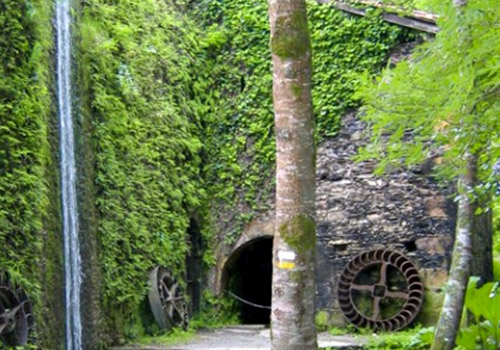
15 min, further information: www.aiapagoeta.com y www.costavasca.org
Zarautz and its beach
The Zarautz beach is the largest in Gipuzkoa, and its 2,500 metre length makes it a multi-disciplinary space with different landscapes and people. Families, surfers and nature lovers all come together at the same time on this sandy beach, distributed into three areas: the western end, frequented by families and bathers; a central part, reserved for surfers, and the dunes on the eastern end, which act as a habitat for several species of flora and fauna.
The ocean promenade is the perfect framework for this sandy area. Of note are sculptures from different artists and an area with a swing set. The promenade goes through the entire Zarauztarra villa and goes to the neighbouring town, Getaria, along a spectacular stroll that never turns its back on the sea.
15 min, further information: www.turismozarautz.com y www.costavasca.org
Getaria: a stroll through its 'Ratón'
The Mount of Saint Anton, popularly known as “Ratón de Getaria” since it strangely resembles a mouse, is an island located in front of the town of Getaria, joined by means of an artificial breakwater, built up on several occasions over the centuries.
Saint Anton takes its name from an old hermitage, located near the current lighthouse. It was a privileged look-out for whale watching, since whale hunting was one of the occupations of Getaria’s inhabitants. Today, several fortifications and the lighthouse, built in 1863, have been preserved.
The “Ratón de Getaria” may be visited as it were a city park. Its vegetation is fairly well-developed when compared with the rest of Guipuzcoa’s coast and its surroundings, where the vineyards to obtain txakoli and the mown grain meadows dominate the landscape.

20 min, further information: www.getaria.net y www.costavasca.org
Zumaia and the Flysch route
The Basque Coast’s Geopark is a small territory encased between the Cantabrian Sea and the Basque mountains, made up of the municipalities of Zumaia, Deba and Mutriku. At first glance, the Geopark stands out thanks to the harmony between the different green tones of the pastures and forests, one after another, from the coastline to the land further inward. But this place’s true interest lies inside of it. Geology is the true main character of this landscape, preserving the history of some of the most impressive episodes in the recent history of Earth.
The Geopark’s 13 kilometres of cliffs house a spectacular stone layer formation called Flysch which, like a large encyclopaedia, show us more than 60 million years of history on planet Earth. Geologists and visitors may walk along these cliffs, or take a boat trip and travel through time to discover the thin black layer, acting as proof for a large asteroid hit and the extinction of dinosaurs approximately 65 million years ago.
The Basque Coast’s Geopark is a lesson that will leave no one indifferent. Here, time, earth, life and our own species are the main characters.
25 min, further information: www.geoparkea.com y www.costavasca.org
Hondarribia: history and cuisine
This is a place to leave stress by the wayside and to allow time to pass from a terrace on the Plaza de Armas right in the historical centre, or on San Pedro street, in the Marina quarter. It is a pleasure to observe the street atmosphere while enjoying pinchos or feeling the warm rays of sunshine lighting up the town. This is an invitation to forget about time and to stroll through the historic centre, enjoying the terraces and peaceful corners telling the city’s history.
This is a time to forget about the clock, to stroll through the sailors’ streets, or to let go and soak up the architecture on its medieval streets and listen to the city’s history through the silence of its walls.
Cuisine is present in each one of Hondarribia’s corners. From restaurants with haute cuisine to romantic establishments with charm, ranging to grill houses and traditional restaurants. Any lover of good food cannot miss out on them.
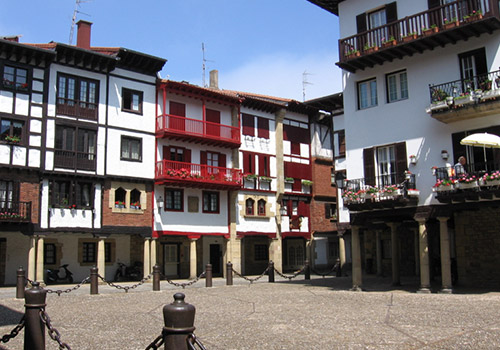
40 min, further information: www.hondarribiaturismo.com
60 min, further information: www.pirineosatlanticos.com
And the Basque capitals, very near to our agricultural tourism:
30 min, further information: www.sansebastianturismo.com
60 min, further information: www.bilbaoturismo.net
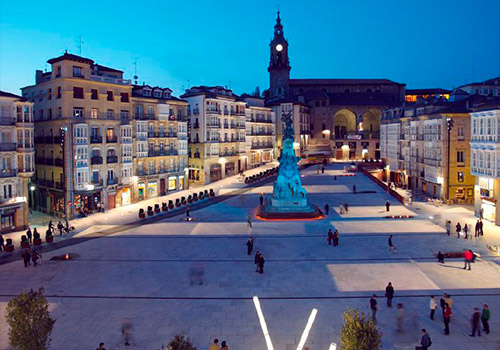
60 min, further information: www.vitoria-gasteiz.org/turismo
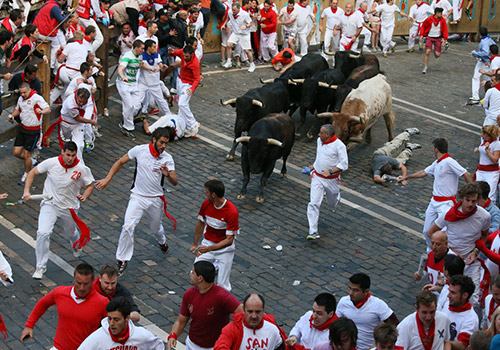
60 min, further information: www.turismodepamplona.es
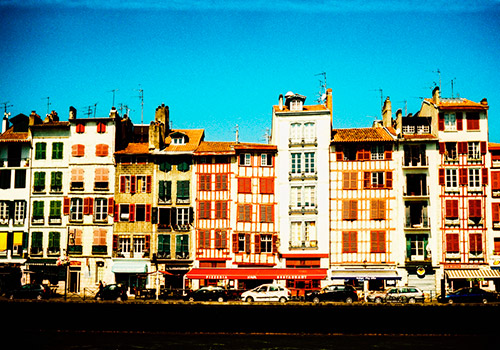
60 min, further information: www.bayonne-tourisme.com




